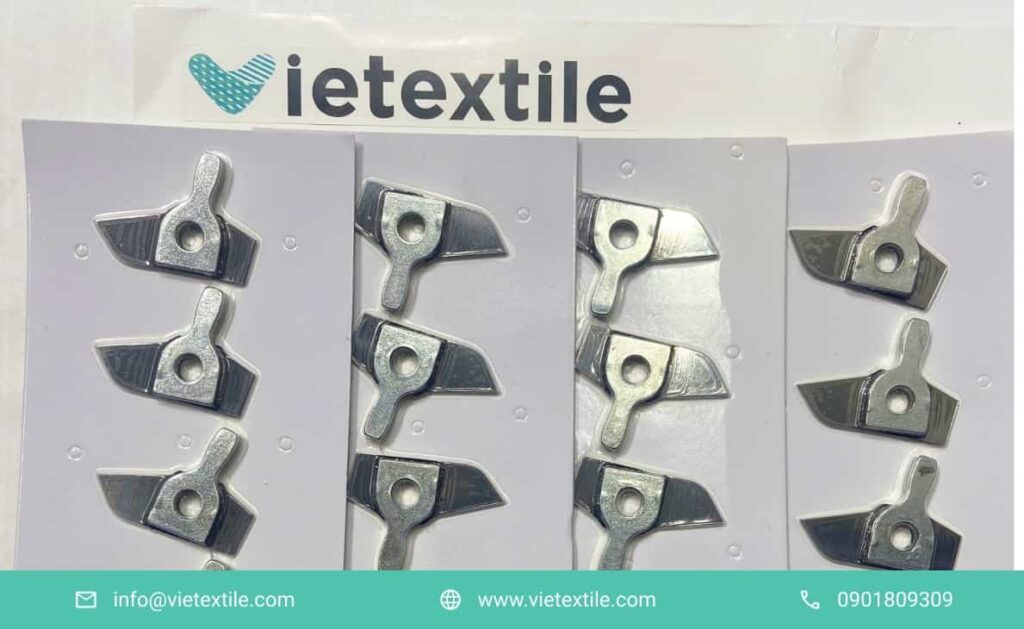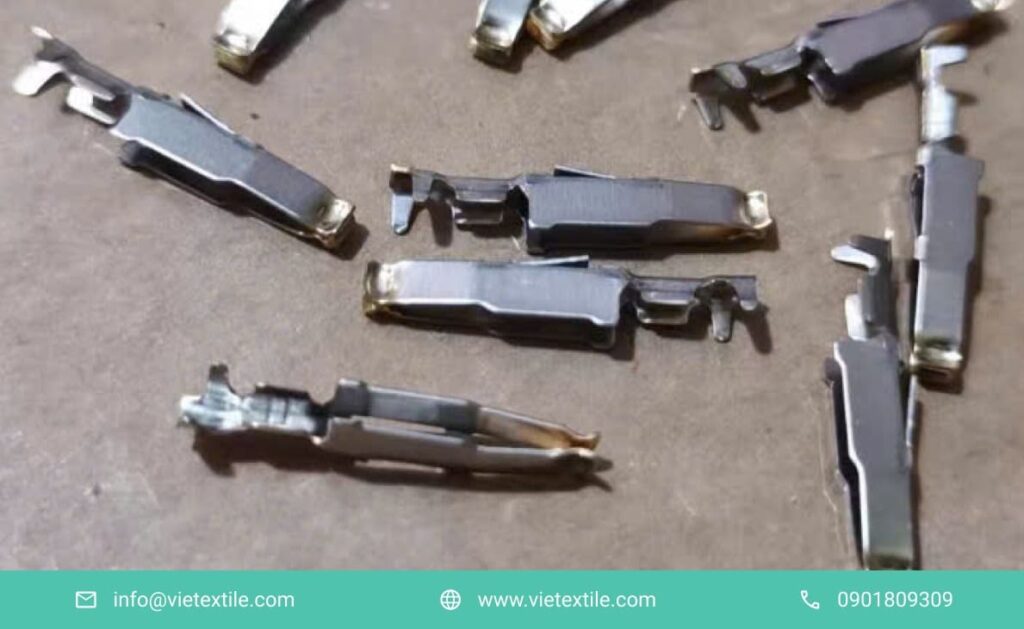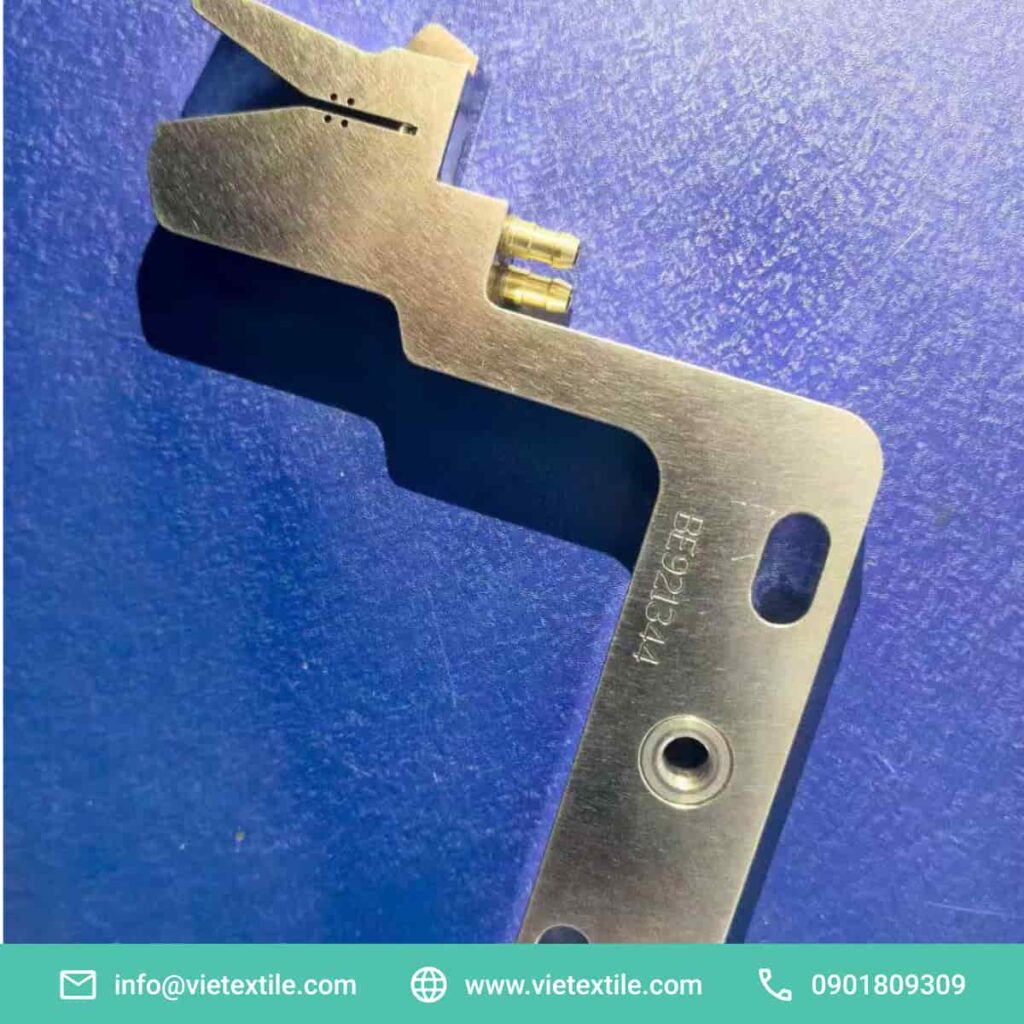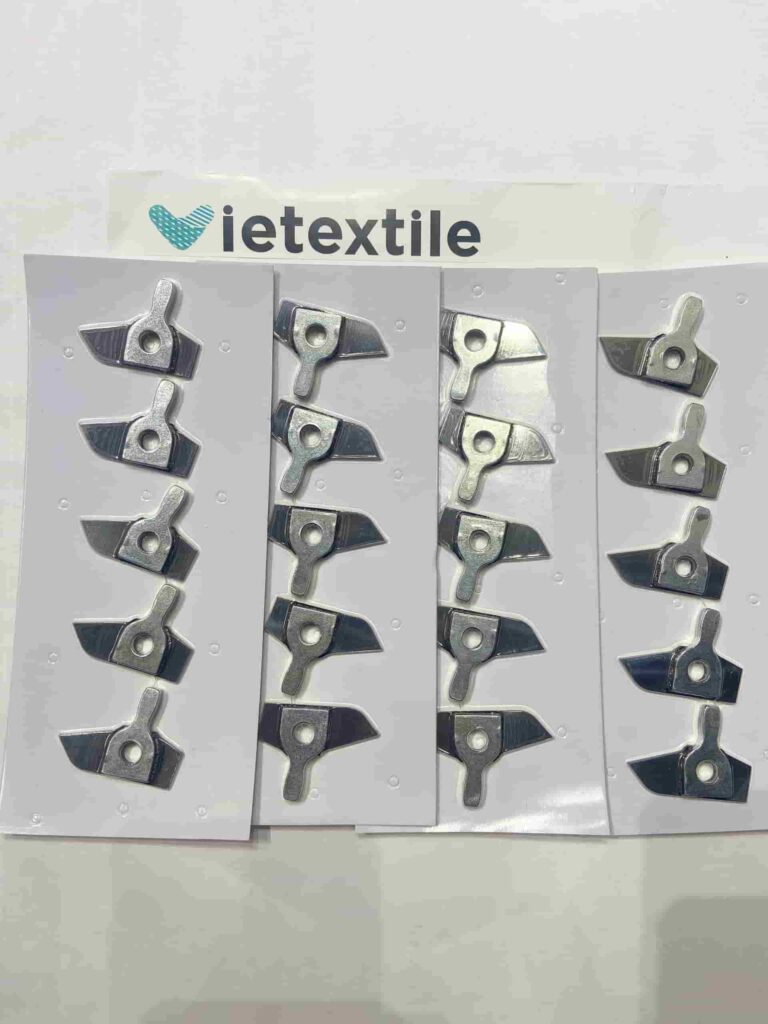For flat knitting machines to operate stably and durably, periodic maintenance of flat knitting machine spares is extremely important. This article will provide a detailed guide on the 3-6 month maintenance cycle, helping to optimize performance and extend equipment lifespan, ensuring continuous production efficiency.
Flat knitting machines are one of the key pieces of equipment in the textile industry, especially in the production of complex and diverse knitted products. With continuous operation and high speeds, machine components endure significant pressure, leading to natural wear over time. If not properly and timely maintained, flat knitting machine spares can quickly degrade, causing malfunctions, reduced productivity, and even serious damage to the entire system.
This article will delve into the importance of periodic maintenance and provide a detailed guide on how to perform 3-month and 6-month cycle maintenance for flat knitting machine spares.

1. The Importance of Periodic Maintenance for Flat Knitting Machine Spares
Nội dung tóm tắt
TogglePeriodic maintenance is not just a task but a crucial strategy to ensure the effective and sustainable operation of flat knitting machines. It helps detect potential issues early, prevent major damage, and optimize operating costs.
1.1. Extending Machine Lifespan and Durability
Periodic maintenance plays a pivotal role in extending the lifespan of flat knitting machines by minimizing wear on essential flat knitting machine spares such as needles, sinker plates, cams, and yarn feeding components. These components, due to continuous operation and high friction, tend to wear down over time. During maintenance, technicians will clean accumulated dust and fibers, lubricate contact points, and readjust technical parameters, ensuring they operate smoothly and accurately.
This process not only helps each flat knitting machine spare maintain optimal performance but also protects the entire machine structure from secondary damage that can arise from a minor faulty component. A properly cared-for machine will operate smoothly, experience fewer malfunctions, thereby significantly increasing its service life and maximizing investment value.
1.2. Optimizing Productivity and Product Quality
Periodic maintenance of flat knitting machine spares directly affects productivity and the quality of the output product. A well-maintained flat knitting machine will operate at its highest efficiency, minimizing common knitting errors such as skipped stitches, broken yarn, or uneven products caused by bent needles, worn cams, or unstable yarn feeding systems. When spares are cleaned and precisely adjusted, the knitting process will proceed smoothly, minimizing machine downtime due to malfunctions.
This not only helps increase the number of products completed per shift but also ensures consistent quality for each product, significantly reducing the defect rate. Enhanced productivity and guaranteed product quality will contribute to strengthening the business’s reputation in the market, creating a sustainable competitive advantage.
1.3. Minimizing Repair Costs and Downtime
One of the most obvious economic benefits of periodic maintenance is the significant reduction in unexpected repair costs and unplanned downtime. The cost to replace a severely damaged flat knitting machine spare or repair a major malfunction is often much higher than the cost of preventive maintenance. By detecting and fixing minor issues early, before they develop into serious damage, businesses can avoid large, unexpected expenses.
Furthermore, minimizing sudden machine downtime helps maintain a continuous production flow, ensuring orders are completed on time and avoiding revenue losses due to delivery delays. This optimizes operational efficiency and profitability for businesses using durable flat knitting machine spares.
1.4. Ensuring Workplace Safety
Workplace safety is an indispensable factor in an industrial production environment, and periodic maintenance of flat knitting machine spares directly contributes to it. Unstable machinery, with loose, worn, or damaged components, can pose many safety risks to operators. Periodic maintenance helps inspect and ensure all safety components such as emergency stop sensors, protective switches, and safety interlocks are functioning correctly.
This helps detect and eliminate potential hazards, minimizing the likelihood of workplace accidents due to machine malfunctions. A safe working environment not only protects the health and lives of workers but also enhances morale and overall productivity when operating flat knitting machines and related flat knitting machine spares.
2. 3-Month Maintenance Cycle for Flat Knitting Machine Spares
The 3-month maintenance cycle focuses on inspecting, cleaning, and lubricating frequently operating parts that are susceptible to dust and fibers. This is a crucial step to maintain the daily stable performance of the flat knitting machine.

2.1. Overall Cleaning of the Machine and Work Area
Regular cleaning is a basic but extremely important step in maintaining flat knitting machine spares. Dust, accumulated fibers, and oil residue are leading causes of friction, machine jams, and reduced component lifespan. Overall cleaning includes using specialized compressed air to blow away dust clinging to machine surfaces, especially in the head area, cam system, and yarn feeding components, where fibers can easily get stuck.
At the same time, the knitting area needs to be thoroughly cleaned, ensuring no lint or dust is trapped in the needle grooves, sinker plates, and small crevices. Finally, inspecting and cleaning the filter of the dust extraction system (if the machine is equipped) is necessary to ensure optimal dust extraction efficiency, preventing dust from re-adhering to critical flat knitting machine spares.
2.2. Inspecting and Cleaning Knitting Needles and Sinker Plates
Knitting needles and sinker plates are two of the most impacted flat knitting machine spares due to direct contact with yarn and continuous friction during knitting. Therefore, their periodic inspection and cleaning are paramount. Each needle needs to be carefully checked for bends, breaks, worn tips, or any signs of rust. Even a minor faulty needle can cause knitting errors, yarn breakage, or damage to other components if not replaced promptly.
After inspection, use a small brush or compressed air to completely remove fibers and dust clinging to the needle grooves and on the surface of the sinker plate. Ensuring clear needle grooves is a prerequisite for the needles to move smoothly, creating precise and uniform stitches, contributing to maintaining product quality and the lifespan of these flat knitting machine spares.
2.3. Lubricating Moving Components
Adequate and proper lubrication is a key factor in reducing friction, heat, and noise, thereby extending the lifespan of moving flat knitting machine spares. In the 3-month cycle, special attention should be paid to lubricating the cam system with specialized lubricating oil for knitting machines, ensuring the oil is evenly distributed in the cam grooves, cam rollers, and related moving parts.
Additionally, pivot points, joints, and other components with relative movement also need to be lubricated to reduce friction and ensure smooth operation. For machines with automatic lubrication systems, a thorough check is required to ensure the system is functioning normally, oil levels are sufficient, and conduits are not blocked. This helps flat knitting machine spares operate efficiently, minimizing wear and preventing malfunctions.
2.4. Inspecting Yarn Feeding and Tensioning Systems
The yarn feeding and tensioning systems play an extremely important role in ensuring stitch quality and fabric evenness, thus requiring thorough inspection during the 3-month maintenance cycle. First, inspect the yarn feeding rollers to ensure they rotate smoothly, without sticking or signs of wear, as any obstruction can affect yarn feeding.
Next, check the yarn clamps and tension sensors to ensure they operate accurately, maintaining stable yarn tension throughout the knitting process. Uneven yarn tension can lead to problems such as yarn breakage, uneven stitches, or fabric deformation. Finally, clean the entire yarn path, removing any lint or dust that could obstruct yarn movement, helping the flat knitting machine spares related to yarn feeding operate efficiently.
3. 6-Month Maintenance Cycle for Flat Knitting Machine Spares
The 6-month maintenance cycle is a more in-depth process, including all steps of the 3-month cycle and adding detailed inspections, adjustments, and replacement of other critical flat knitting machine spares.
3.1. Inspecting and Adjusting Cam and Needle Systems
The cam and needle systems are the heart of the flat knitting machine, directly affecting knitting quality and the precision of each stitch. In the 6-month maintenance cycle, inspecting cam wear is extremely important. Technicians need to thoroughly check the cam surface for wear, pitting, or deformation, as even minor damage can cause needle movement inaccuracies. If significant signs of wear are detected, cam replacement should be considered to ensure precise movement.
Next, adjusting the distance between the needle and cam must meet the manufacturer’s standards, as discrepancies can cause serious knitting errors or damage the needles. Finally, checking the synchronization of the needles and sinker plates is necessary to ensure they work in harmony, without any discrepancies that could affect the stitch formation process, thereby maintaining the optimal performance of these flat knitting machine spares.
3.2. Inspecting and Lubricating the Drive System
The drive system, including belts, gears, and main rotating shafts, is the backbone of the flat knitting machine, ensuring synchronization and efficient power transmission. In the 6-month maintenance cycle, inspecting belts is a top priority: checking tension, detecting cracks, wear, or signs of slippage. If necessary, belts must be tension-adjusted or replaced to avoid desynchronization and reduced performance. For gears, a thorough check is needed for tooth wear, chipping, or unusual noise during rotation, then lubricate them with specialized grease to reduce friction.
Finally, check the play of rotating shafts and bearings, lubricating or replacing them if they are worn or noisy. This is crucial to ensure the stability and durability of the flat knitting machine spares in the drive system, maintaining smooth machine operation.
3.3. Inspecting Electrical System and Sensors
The electrical system and sensors are the “brain” of the flat knitting machine, ensuring safe, accurate, and automatic machine operation. In the 6-month maintenance cycle, a thorough check of wires and connections is necessary to ensure no wires are frayed, broken, or loosely connected, which could cause short circuits or sudden shutdowns. Next, check the operation of all sensors (yarn break sensor, needle jam sensor, speed sensor, etc.) to ensure they operate accurately and sensitively. Cleaning the sensor surface is also very important to remove dust that can reduce sensitivity.
Finally, check indicator lights and the control panel to ensure all indicator lights and buttons function normally, providing accurate information about machine status. The stability of flat knitting machine spares belonging to the electronic system is a key factor for safe and efficient operation.
3.4. Inspecting and Cleaning Lubrication System and Filter
The lubrication system is the bloodstream of the flat knitting machine, ensuring moving parts are adequately lubricated and friction is reduced. In the 6-month cycle, the quality of lubricating oil needs to be checked by observing its color and viscosity. If the oil is dirty, contains sediment, or has deteriorated, the entire oil needs to be replaced with new oil to ensure lubrication effectiveness.
Concurrently, cleaning or replacing the oil filter is extremely important, as the filter helps remove sediment and impurities from the oil, keeping the oil clean and preventing system blockages. Finally, check the oil pump to ensure it operates stably, providing sufficient pressure and oil flow to all flat knitting machine spares requiring lubrication. A clean and efficient lubrication system will significantly extend the machine’s lifespan.
3.5. Inspecting Other Auxiliary Components
In addition to the main components, auxiliary flat knitting machine spares also play an important role and need to be periodically inspected during the 6-month cycle. If the machine uses a pneumatic system, check the air pressure to ensure it is stable and there are no leaks in the hoses or connections.
For machines with a cooling system, ensure the system operates effectively to maintain a stable machine temperature, preventing overheating that can damage sensitive flat knitting machine spares. Finally, a simple but essential task is to check all screws and bolts throughout the machine to ensure they are tightened, not loosened by vibrations during operation. This helps maintain the structural integrity of the machine and prevents minor issues from developing into major problems.
4. Important Notes When Maintaining Flat Knitting Machine Spares
To ensure the maintenance process for flat knitting machine spares is effective and safe, the following principles should be adhered to:

4.1. Ensure Workplace Safety
Safety is the top and non-negotiable factor when performing any maintenance work on a flat knitting machine. Before starting, it is paramount to completely disconnect the machine’s main power supply and display clear warning signs to prevent unintended machine startup, which could endanger the person performing the work. Maintenance personnel must always be equipped with full personal protective equipment (PPE) including cut-resistant gloves, safety glasses to protect eyes from dust or chemicals, and other necessary protective equipment depending on the nature of the work.
Additionally, the work area must always be kept clean, well-lit, and well-ventilated to ensure good visibility and avoid obstacles that could cause tripping. Strict adherence to these safety rules will minimize the risk of accidents when working with flat knitting machine spares.
4.2. Use Genuine Spares and Specialized Supplies
The quality of flat knitting machine spares and maintenance supplies (such as oil, grease) directly affects the effectiveness of the maintenance process and the overall lifespan of the machine. Always prioritize using genuine spares or those from reputable suppliers with clear quality certifications. These spares are manufactured according to the machine manufacturer’s strict technical standards, ensuring perfect compatibility, high durability, and optimal performance.
Conversely, using spares of unknown origin or low quality can cause serious damage to the machine, leading to higher repair costs and reduced equipment lifespan. Similarly, using the correct type of lubricating oil and grease recommended by the manufacturer is extremely important, as unsuitable oil can damage components or reduce the lubrication effectiveness of moving flat knitting machine spares.
4.3. Maintain a Maintenance Log
Maintaining a detailed maintenance log is an indispensable practice for monitoring machine status and planning more effective long-term maintenance. Each time maintenance is performed, all important information should be recorded, such as the maintenance date, a list of tasks performed (e.g., cleaning, lubrication, adjustment), flat knitting machine spares that have been replaced (including quantity and part number), and any issues detected or resolved during the inspection.
This maintenance log will become a valuable document, helping the business track the machine’s operational history, evaluate the wear level of each type of spare, more accurately predict when spares will need replacement in the future, and optimize preventive maintenance plans, ensuring the machine always operates in its best condition.
4.4. Staff Training
Thorough training of maintenance personnel is a key factor in ensuring work is performed accurately, safely, and efficiently. Personnel need to be equipped with in-depth professional knowledge about the structure, operating principles of flat knitting machines, and specific maintenance procedures for each type of flat knitting machine spare. This includes how to identify abnormal signs, and how to safely disassemble, assemble, and adjust components.
Furthermore, opportunities for practical training under the supervision of experienced experts should be provided so that personnel can improve their practical skills. Regularly updating knowledge about new machine technology and advanced maintenance methods will help the maintenance team always be ready to face new challenges, ensuring machinery is always operated and maintained to the highest standards, optimizing the lifespan of flat knitting machine spares.
5. VieTextile – Your Partner for Flat Knitting Machine Spares Supply and Maintenance Support
With many years of experience in the textile industry, VieTextile is proud to be a trusted partner, specializing in providing comprehensive solutions for high-quality flat knitting machine spares and professional maintenance support services. We understand the importance of every detail in ensuring the performance and lifespan of machinery.
VieTextile is committed to providing customers with genuine knitting machine spares from clear origins, subjected to strict quality control. Whether you are looking for knitting needles, sinker plates, cams, or any other type of flat knitting machine spares, we can meet your needs with a diverse range of types and models, suitable for various machine lines.
VieTextile’s team of technical experts is always ready to consult, provide technical support, and offer the most optimal solutions for each business’s needs. We not only sell products but also accompany customers throughout the usage process, including maintenance guidance and troubleshooting. With VieTextile, you can be completely confident in our product quality and professional support services, contributing to enhancing your production capacity and business efficiency.
6. Frequently Asked Questions about Flat Knitting Machine Spares Maintenance (FAQ)
Here are some frequently asked questions about flat knitting machine spares maintenance that many businesses are interested in:
6.1. Why is periodic 3-6 month maintenance necessary for flat knitting machine spares?
Periodic 3-6 month maintenance helps detect early signs of wear or minor damage to flat knitting machine spares before they become major problems. This helps prevent sudden breakdowns, extends machine life, maintains stable productivity and product quality, and reduces major repair costs in the future.
6.2. Can I maintain flat knitting machine spares myself or do I need a specialist?
For basic maintenance tasks such as cleaning, lubrication, and visual inspection of easily accessible flat knitting machine spares, trained personnel can perform them. However, for more in-depth tasks such as adjusting the cam system, inspecting electronic components, or replacing complex parts, it is advisable to seek assistance from a professional technician or maintenance service provider.
6.3. Which lubricating oil is best for flat knitting machine spares?
Using the correct type of lubricating oil is very important. You should refer to the flat knitting machine manufacturer’s user manual for recommended oil and grease types. Typically, these are specialized industrial oils with viscosity and properties suitable for the machine’s operating conditions.
6.4. What signs indicate that flat knitting machine spares need immediate replacement?
Signs requiring immediate replacement include: knitting needles that are broken or severely bent; sinker plates that are cracked or deformed; cams that are pitted or chipped; belts that are broken or constantly slipping; unusual loud noises from moving parts; or the machine continuously reporting errors related to a specific spare. Ignoring these signs can cause more serious damage to other flat knitting machine spares and the entire machine.
7. Contact Information
To acquire quality and professional flat knitting machine spares, contact VieTextile today!
Contact Information:
- Hotline: 0901 809 309
- Email: info@vietextile.com
- Website: https://vietextile.com










